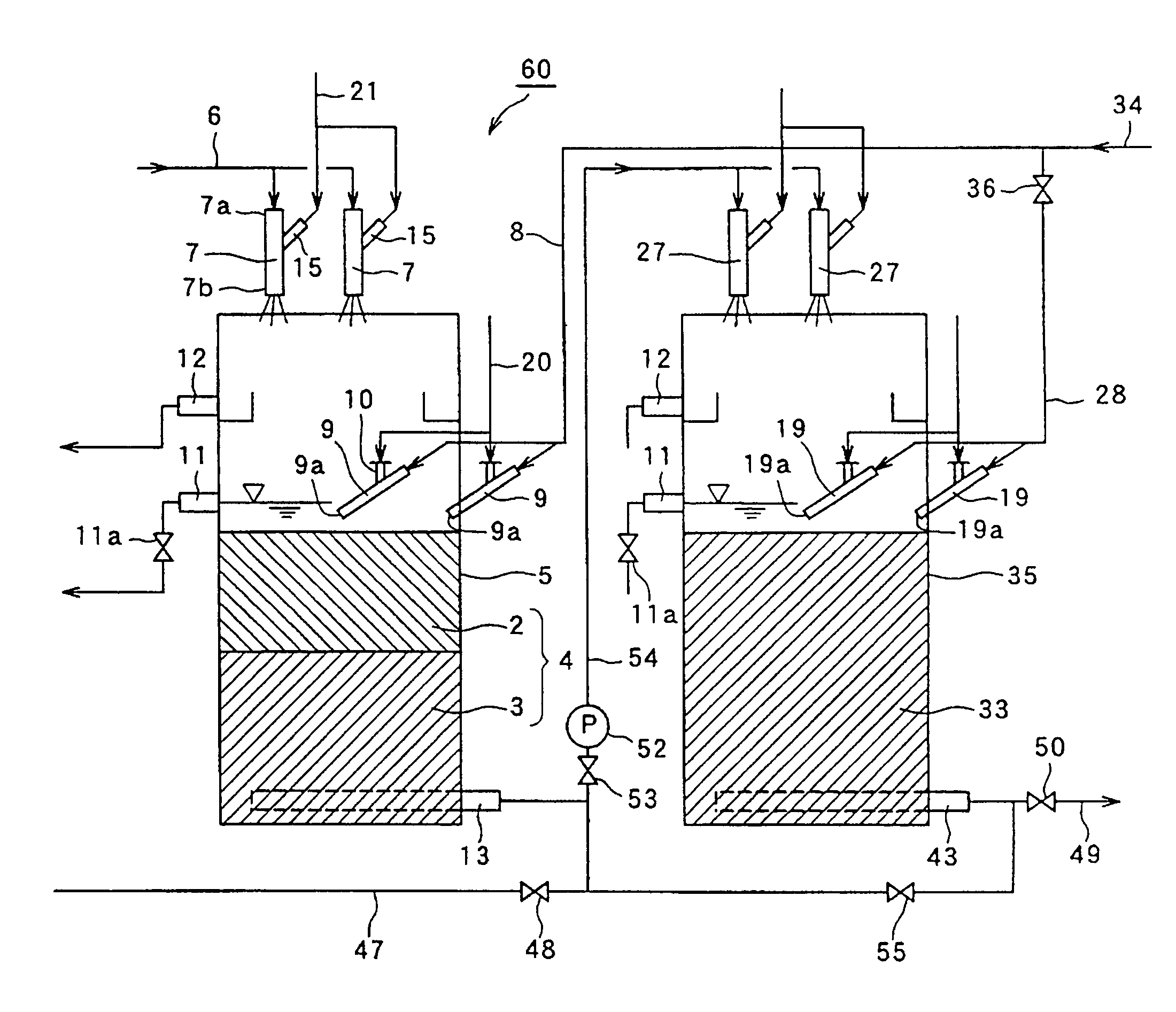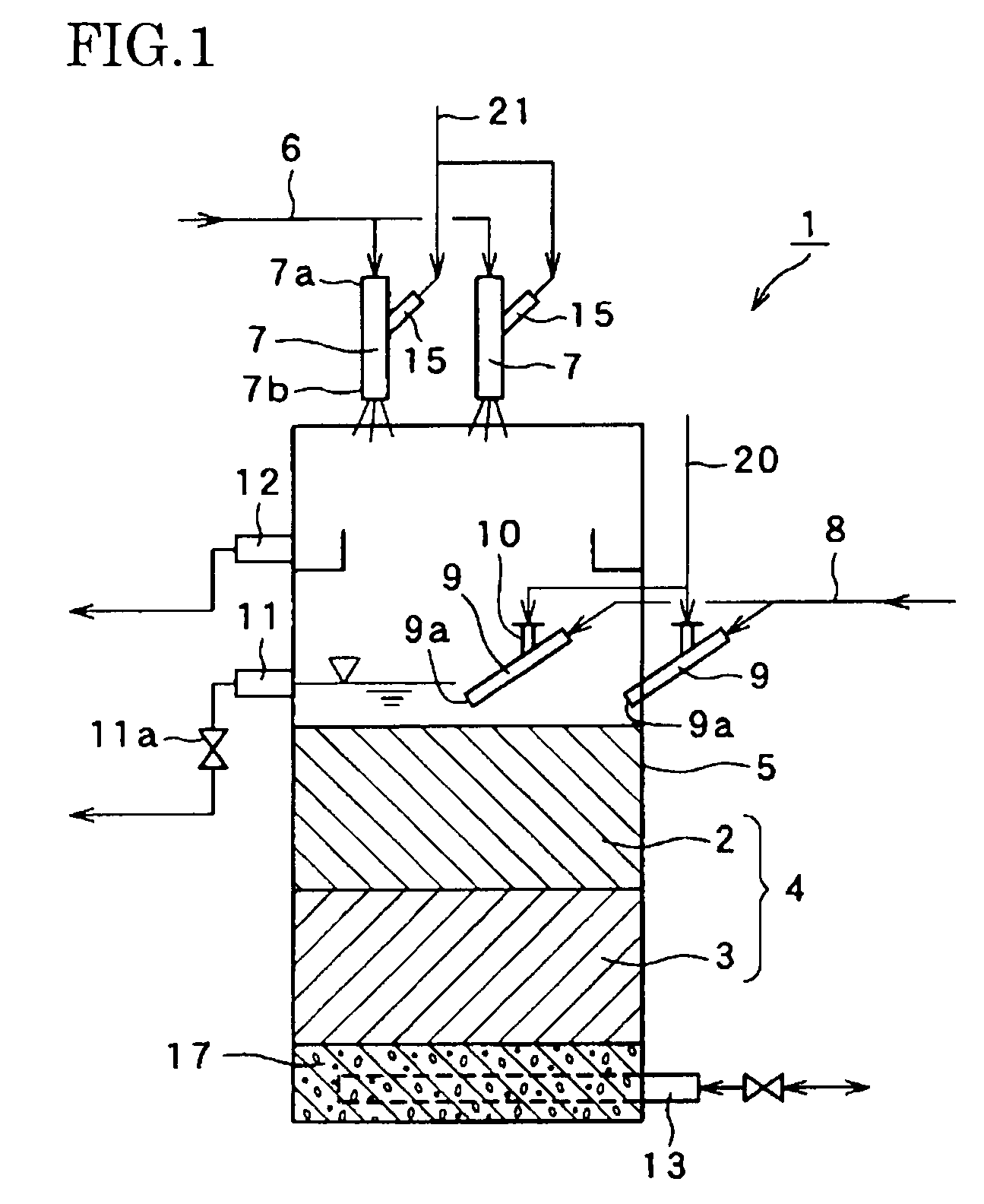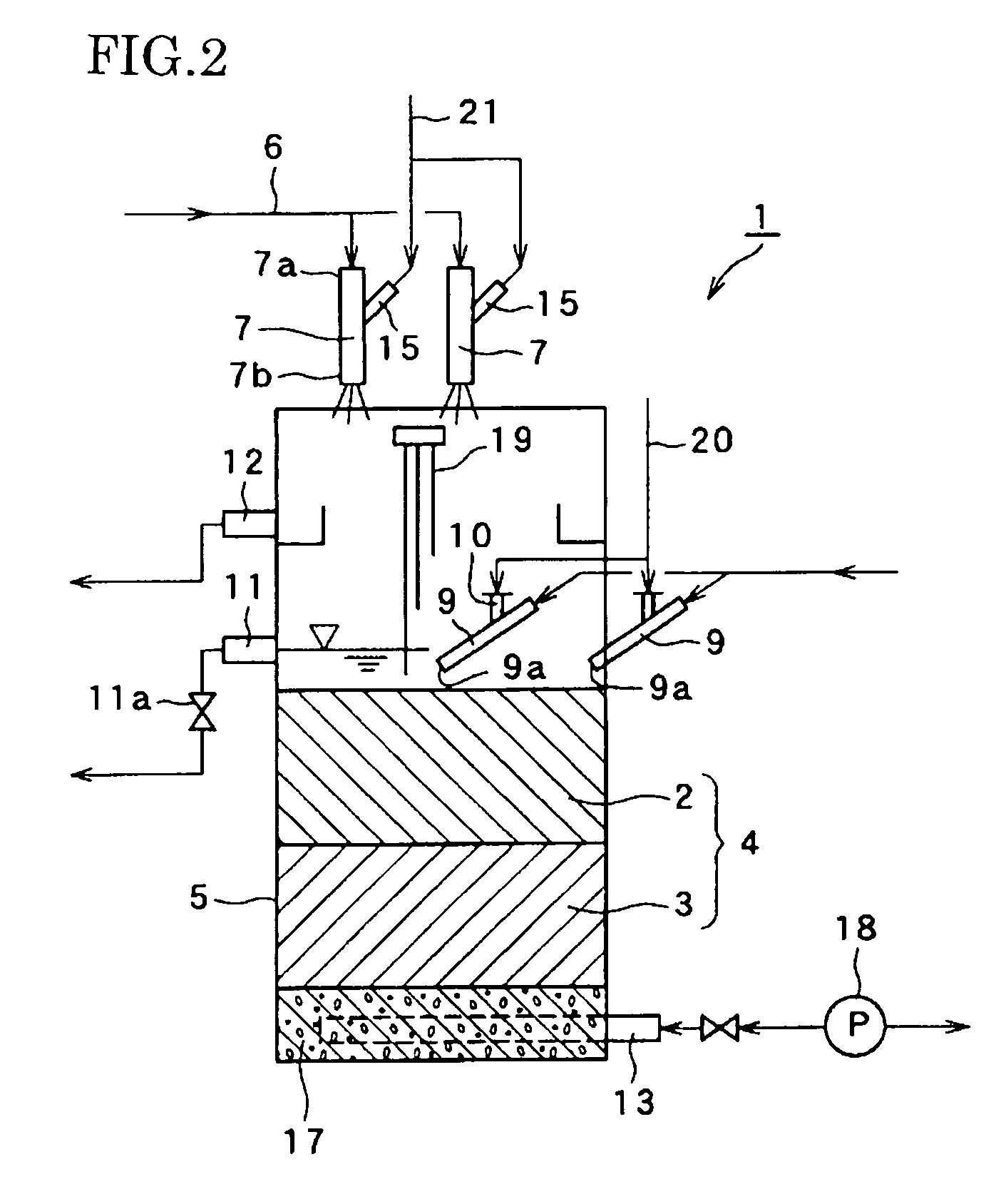Water treatment apparatus and a method for cleaning a filter layer of a water treatment apparatus
a technology of water treatment apparatus and filter layer, which is applied in the direction of filtration separation, sedimentation settling tank, separation process, etc., can solve the problems of iron and manganese contents in underground water, water unsuitable for drinking, and various difficulties in these industries
- Summary
- Abstract
- Description
- Claims
- Application Information
AI Technical Summary
Benefits of technology
Problems solved by technology
Method used
Image
Examples
Embodiment Construction
[0083]Preferred embodiments of the invention will now be described with reference to the accompanying drawings.
[0084]The present invention can be applied not only to a water treatment apparatus comprising two filter layers of an upper layer and a lower layer but also to a water treatment apparatus comprising a single filter layer. In the following description, description will be made about a preferred embodiment of a water treatment apparatus having two filter layers of an upper layer and a lower layer.
[0085]FIG. 1 is a diagram showing schematically an embodiment of the water treatment apparatus of the invention. FIG. 2 is a diagram showing schematically another embodiment of the water treatment apparatus. FIG. 3 is a plan view showing disposition of upper layer cleaning jet nozzles used in the embodiments of FIGS. 1 and 2.
[0086]In FIG. 1, A water treatment apparatus 1 comprises, as main component elements, a filtering tank 5 housing a filter layer 4 consisting of an upper layer 2 ...
PUM
| Property | Measurement | Unit |
|---|---|---|
| filtering speed | aaaaa | aaaaa |
| speed | aaaaa | aaaaa |
| speed | aaaaa | aaaaa |
Abstract
Description
Claims
Application Information
 Login to View More
Login to View More - R&D
- Intellectual Property
- Life Sciences
- Materials
- Tech Scout
- Unparalleled Data Quality
- Higher Quality Content
- 60% Fewer Hallucinations
Browse by: Latest US Patents, China's latest patents, Technical Efficacy Thesaurus, Application Domain, Technology Topic, Popular Technical Reports.
© 2025 PatSnap. All rights reserved.Legal|Privacy policy|Modern Slavery Act Transparency Statement|Sitemap|About US| Contact US: help@patsnap.com



